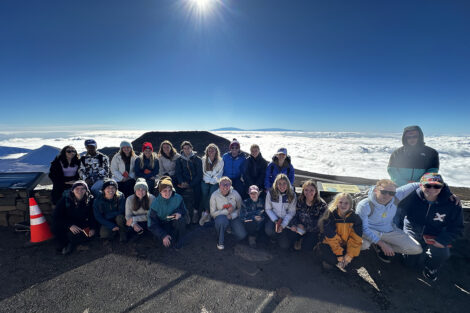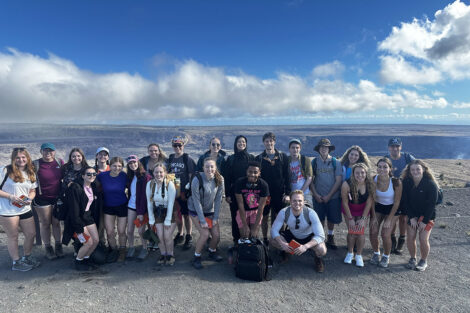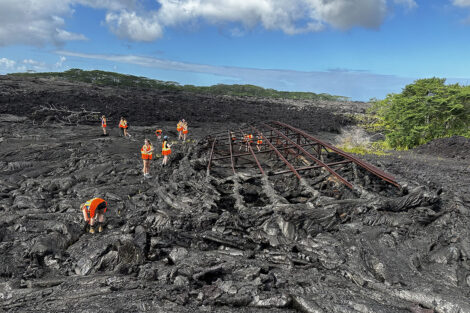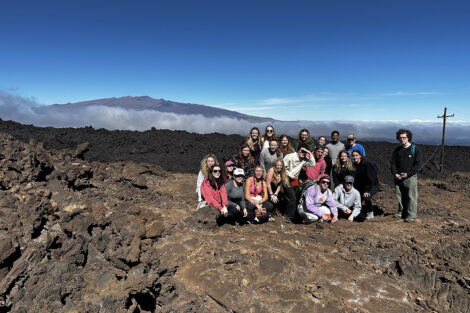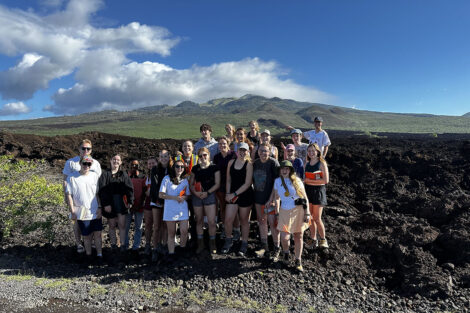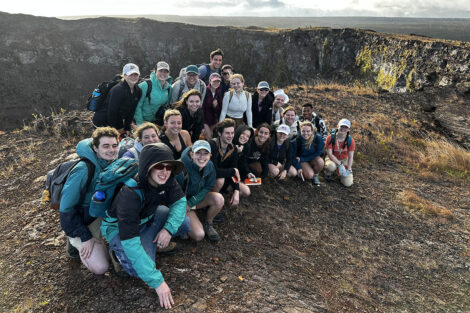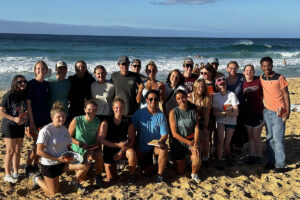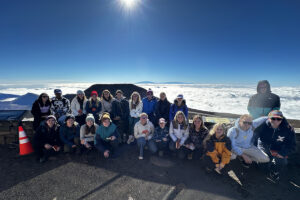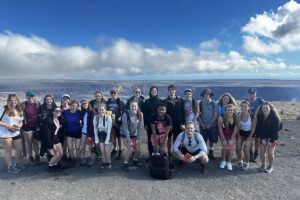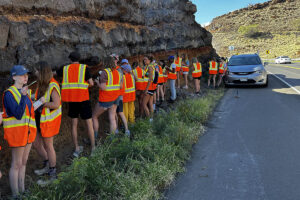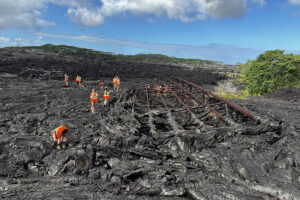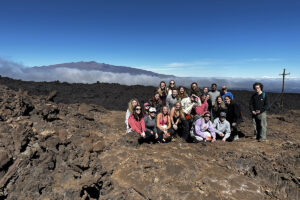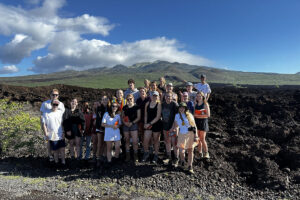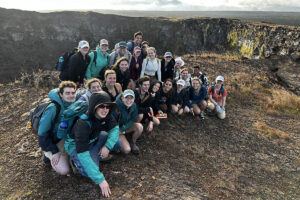A world of learning: The Hawaiian Islands
The course: GEOL 150 | Geological Evolution of the Hawaiian Islands
The experience: For 23 students and Lawrence Malinconico, associate professor of geology, and Dru Germanoski, Van Artsdalen Professor of Geology and Environmental Geosciences, January was spent island-hopping across the Big Island, Maui, and Oahu.
By traveling sequentially from Hawaii to Maui to Oahu, the students can study how the morphology of the islands might change through time in response to different geological processes.
“Hawaii lets us use a time machine,” Germanoski says.
“We don’t have enough time to study the island of Hawaii for three million years, but what we can do is we can island hop,” Malinconico adds. “We go from Hawaii to Maui, and we jump ahead two million years, and then we get to Oahu and jump ahead three million years, so the students can see what the island of Hawaii might look like three million years from now.”
Students saw the full range of weather possibilities, from hot days on the beach to subfreezing temperatures at high altitudes.
For Isabella Gaglione ’25, one of the most memorable days came when the group visited the summit of Haleakalā on Maui. “We were about 10,000 feet above sea level, and if you looked out, all you could see below us were clouds engulfing the island,” she says. “The summit itself, which was shaped through various erosional and depositional events, was gorgeous. It was definitely a ‘Wow, I can’t believe I’m doing school in Hawaii’ pinch-me-moment.
“From the top of Haleakalā, we could see the summits of some of the other volcanoes that we had studied on the Big Island peaking over the clouds, and it really put into perspective the magnitude of what we were learning,” she continues.
Later that day, the group had the opportunity to attend a luau. “We learned how to hula dance, ate delicious food, and watched an incredible performance of a Polynesian tale detailing the island’s history, which included fire dancers,” she adds. “It was so fun to get to dress up and engage in the local culture after looking at the islands from a more scientific perspective.”

